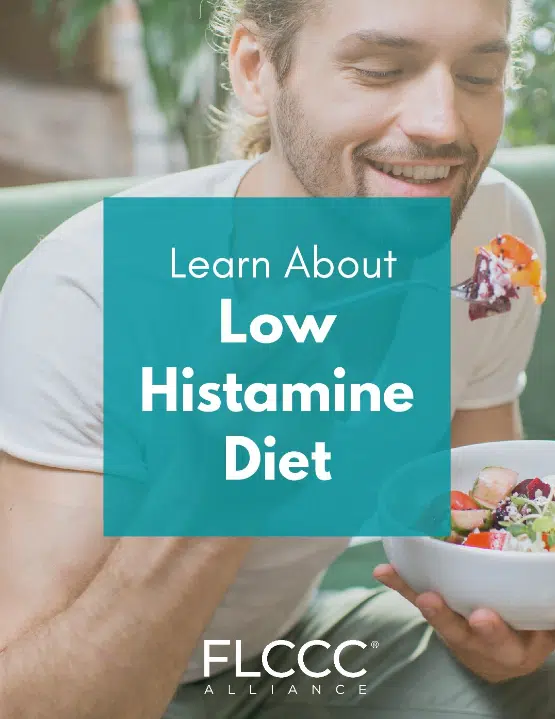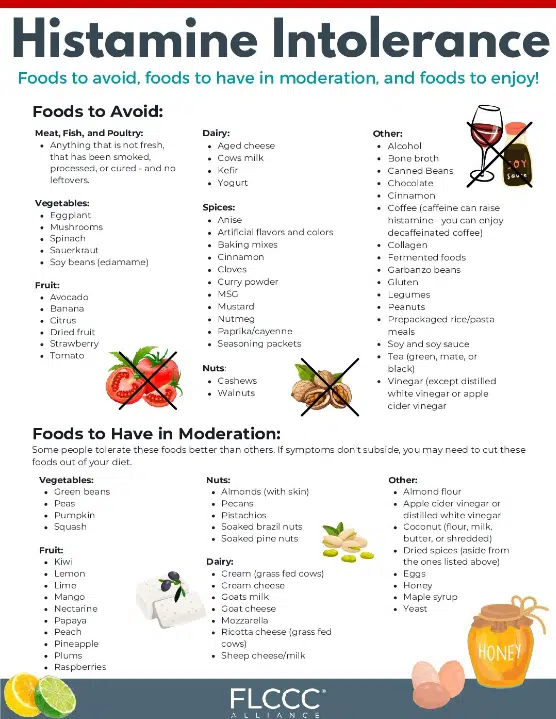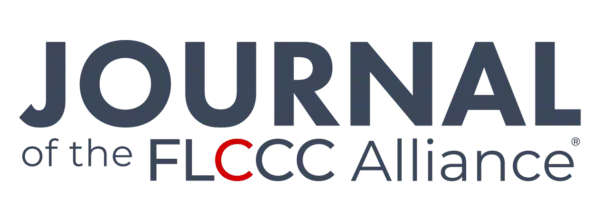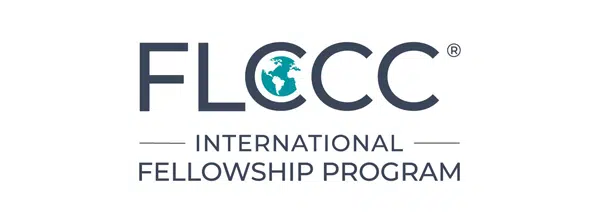Wondering about low-histamine diets? We’ll tell you what a low-histamine diet is all about: health benefits, low-histamine foods, and more!
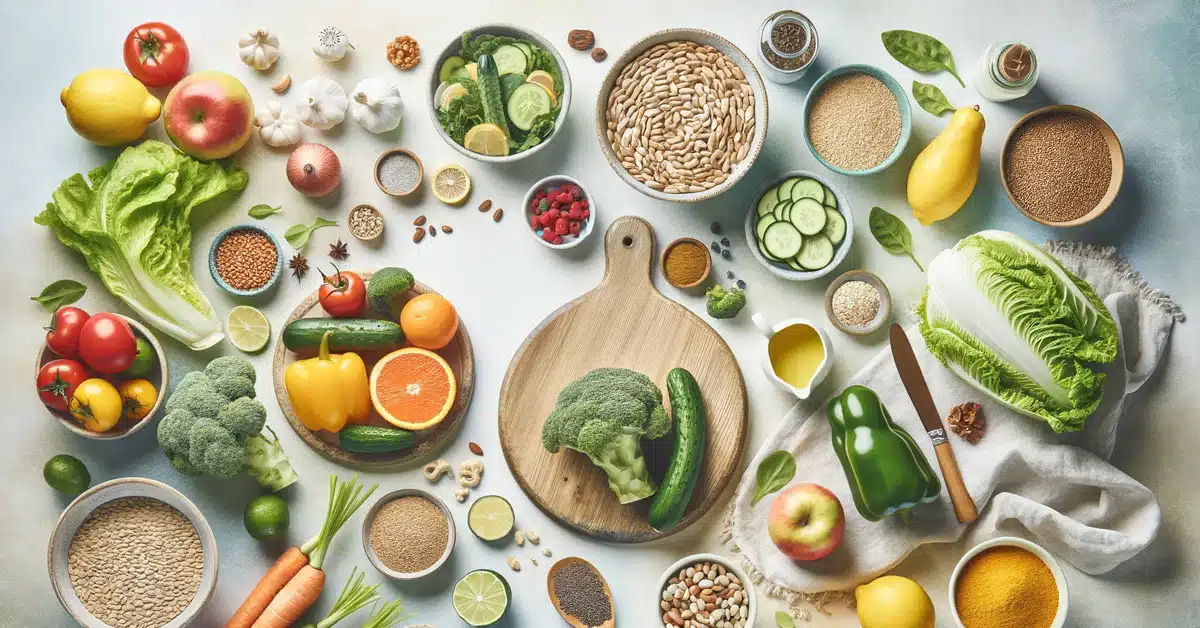
Heard about the healing potential of the low-histamine diet? Congratulations! You’ve tapped into a powerful piece of knowledge. So, let’s build on it! Today, we’re here to share everything you need to know about low-histamine diets.
- What is Histamine?
- What are Some Symptoms of Histamine Intolerance?
- What is a Low-Histamine Diet?
- Why Go on a Low-Histamine Diet?
- What Foods Can I Eat on a Low-Histamine Diet?
- What Foods to Avoid on a Low-Histamine Diet?
Have a look at the guide below or keep scrolling to get started. In the guide, you’ll find a ton of information, including a printable low-histamine diet plan in PDF form! 🙌
1. What is Histamine?
Histamine is a chemical that’s naturally part of your body. It has a big job, helping your immune system fight off germs and playing a role in how your stomach digests food and how messages get sent to your brain. When you run into something you’re allergic to, like pollen, your body releases histamine. This can make you itch, sneeze, or swell up, which are ways your body tries to protect itself.
Histamine is mainly known for its role in causing allergy symptoms. But it has other important functions, like regulating your sleep-wake cycle and cognitive function. Antihistamines are a common medication that can manage histamine levels.
Histamine isn’t just in your body; it’s also in some foods, especially ones that have been aged or fermented, like aged cheeses, sausages, wine, and fish. If someone has trouble handling histamine in food, they might feel sick after eating these things. This is because their body can’t break down the histamine well, leading to annoying symptoms like a runny nose, upset stomach, or itchy skin.
2. What are Some Symptoms of Histamine Intolerance?
The issue with histamine intolerance is that the body is not breaking down the histamine effectively, causing inflammation. This can lead to a bunch of uncomfortable symptoms after eating foods high in histamine. Here are some common ones:
- Skin Issues: This could be things like hives, itching, or eczema.
- Digestive Problems: Stomach aches, bloating, diarrhea, and sometimes nausea or vomiting can happen.
- Respiratory Symptoms: Sneezing, a runny or blocked nose, and difficulty breathing are common.
- Headaches: Some people get headaches or even migraines.
- Heart Issues: Rapid heartbeat or changes in blood pressure might occur.
- Other Symptoms: Fatigue, anxiety, and difficulty sleeping are also symptoms some people with histamine intolerance experience.
It’s a pretty wide range of symptoms, which is why it can sometimes be tricky to figure out if what you’re experiencing is histamine intolerance or something else.
One important note: Histamine intolerance is not the same as a food allergy. If a person eats a lobster and goes into anaphylactic shock, that’s a food allergy. If a person eats a lobster and experiences symptoms like those listed above, that’s histamine intolerance.
3. What is a Low-Histamine Diet?
A low-histamine diet is when you eat foods that have low levels of histamine to avoid or lessen symptoms like headaches, stomach pain, or skin issues that happen if your body has trouble handling too much histamine. It means saying no to aged cheeses, certain processed meats, and some other stuff that can make histamine levels go up in your body.
At its most basic, those with food intolerances would follow a low-histamine diet by removing or reducing the consumption of histamine-rich foods. At its most complex, you’d be working with your doctor and a registered dietitian to figure out exactly what foods are intolerable.
What About Elimination Diets?
An elimination diet is a way of eating where you stop having certain foods for a while because you think they might be causing you problems like allergies or digestive issues. After not eating these foods for a bit, you slowly start adding them back into your meals one by one. This helps you figure out exactly which food is causing the trouble. It’s like being a detective with your diet to see what makes you feel good and what doesn’t.
One method to try: Create a food diary. When you eat a meal, write down all the foods you ate and the approximate quantity. Wait some time and note how you feel. Repeat this and try to identify patterns. What foods made you feel good vs which foods made you feel bad?
4. Why Go on a Low-Histamine Diet?
If you feel unwell after eating, or if you are suffering from chronic symptoms similar to the ones we listed a few sections earlier, it might be time to evaluate your meal plan and consider a low-histamine diet.
Even if you haven’t been officially diagnosed with histamine intolerance, going on a low-histamine diet could be an easy way to improve your overall health. But some folks may want to consider low-histamine diets as a priority, namely those with other histamine-adjacent food intolerances:
- Lectin Sensitivity: Lectins are a type of protein that can cause digestive issues for some. While not directly related to histamine intolerance, following a lectin-free diet might benefit those with multiple food sensitivities.
- Chronic Urticaria: Also known as hives, urticaria can be a reaction to high histamine levels. A low-histamine diet may help reduce outbreaks for some individuals.
- Chronic Candida: A diet low in histamine may overlap with anti-Candida diets since both typically recommend minimizing fermented foods and sugars.
- Sulfur Sensitivity: Some individuals sensitive to sulfur-containing foods might also experience histamine-related symptoms, though the connection is not direct. Low-sulfur diets limit foods like cruciferous vegetables, onions, and garlic.
- Gluten Sensitivity: Gluten sensitivity is separate from histamine intolerance, but some find that managing both can help improve overall symptoms.
- Oxalate Sensitivity: Oxalates are compounds found in certain foods that can contribute to kidney stones. While not directly related to histamine, individuals with multiple sensitivities may also consider oxalate content.
- Salicylate Sensitivity: Salicylates are chemicals found naturally in many plants. Like histamine, some people may be sensitive to salicylates and benefit from a diet that limits their intake.
- MCAS (Mast Cell Activation Syndrome): Individuals with MCAS may have severe reactions to even small increases in histamine. A low-histamine diet is often recommended as part of the management strategy.

When is a Low-Histamine Diet Plan Prescribed?
When a person displays signs or symptoms that may be caused by histamine intolerance (and after food allergies have been ruled out), a low-histamine diet is often recommended. A favorable response to this diet can help aid in the diagnosis of histamine intolerance.
Additionally, a low-histamine diet may be appropriate for people with a diamine oxidase (DAO) degradation disorder who need to avoid histamine, other biogenic amines, and DAO inhibitors. One can also purchase DAO inhibitors to help break down histamine, which may be helpful to someone with this issue.
When trialing a person on a low-histamine diet, the compatibility of included foods and tolerance is highly dependent on the individual’s sensitivity and the amount of histamine-containing food consumed. Furthermore, many factors, such as stress and hormones, can affect tolerance.
Note: ‘Trial and error’ is often necessary in the diet prescription process, i.e., determining what is tolerated and in what quantities.
How Long Does a Low-Histamine Diet Take to Work?
How quickly a low-histamine diet starts to make you feel better can be different for everyone. Some people might notice they’re feeling better in just a few days or weeks, but for others, it could take a month or more.
This happens because everyone’s body deals with histamine differently, and things like how stressed you are or how your stomach feels can play a big part, too. It’s a good idea to stick to the diet closely for about 4 to 6 weeks to see if it’s helping.
Low-histamine diets are not meant to be “forever diets”. They are a way for our system to get a break, calm down inflammation, and allow the body to heal so you can return to a normal diet.
Talking to a doctor or a diet expert can also help you figure out the best way to follow the diet.
5. What Foods Can I Eat on a Low-Histamine Diet?
Histamine forms in perishable food during fermentation, maturation processes, and the ripening of fruit. There are also natural histamine levels in some foods. The amount of histamine from dietary sources can vary greatly, but in the following sections, we’ll let you know what foods you can eat without worry.
In addition to foods that contain histamines, there are those foods that are called “histamine liberators”. These foods (like bananas, tomatoes, strawberries, and chocolate) can prompt your body to release histamine. Avoiding or limiting these can be crucial in managing histamine intolerance.
On a low-histamine diet, minimally processed foods are generally encouraged, and even removing skin or peel from produce can increase histamine content. Certain foods, beverages, additives, and drugs may either promote histamine release or inhibit enzymes (DAO enzymes) necessary for breaking it down.
No matter what foods you eat, here’s a low-histamine diet tip: freeze your leftovers. That means the freezer, not the refrigerator! If you do weekly meal prep or have loads of leftovers, this is one way to prevent histamine from setting in.
Low-Histamine Meats & Protein
- Natural, Fresh Meat (Poultry, Sheep, Goats, Cattle, Pork, Wild Boar), as fresh as possible
- Packaged and dated meat (Cutlet, Fillet, Chicken Legs, Turkey Breast)
- Frozen meat, thawed rapidly
- Cooked Ham (In slices, without yeast extract or glutamate)
- Eggs (Chicken, Quail)
Low-Histamine Fish & Seafood
- Freshly-Caught Fish
- Frozen fish (No long-time storage)
- Thaw quickly and use immediately
- Do not allow to thaw slowly in the refrigerator (Pollock, Cod, Trout, Whitefish, Perch, Organic Pangasius)
Low-Histamine Dairy Foods
- Raw Milk, Pasteurized Milk
- UHT-Milk (Shelved kinds of milk, such as canned milk)
- Butter, Cream, Whey
- Cream Cheese (Mozzarella, Curd Cheese, Cottage Cheese, Mascarpone, Ricotta, Goat Cream Cheese)
Check out the PDF guide for a complete food list of low-histamine foods, including fruits, vegetables, spices, beverages, and more!
Plus, check out this PDF with some low-histamine food swaps! 👇
6. What Foods to Avoid on a Low-Histamine Diet?
Here are the foods you’ll want to keep out of meal prep if you suspect you have histamine intolerance.
Meats & Protein to Avoid
- Dry-Cured Ham, Bacon
- Bone-Matured or Dry-Aged Meat
- Long-hung meat (Mainly certain pieces of beef)
- Finely Chopped/Pureed Meat (Meatloaf, Spreads, Cold Cuts)
- Almost all Sausages (Salami, Liverwurst)
- Offal, Innards (Especially Liver)
Fish & Seafood to Avoid
- Canned Fish, Fish Sauces
- Marinated, Salted, Dried, Smoked, or Pickled Fish and Seafood
- Certain fish species (Scombroidae family: Tuna, Mackerel, Herring, Sardines, Anchovies, Mahi Mahi)
- Shellfish (Mussels, Lobsters, Crabs, Shrimps, Prawns)
Dairy Foods to Avoid
- Hard Cheese, Semi-Hard Cheese, Soft Cheese
- Processed Cheese (Prepared Cheese, Cheese Products, Plastic Cheese)
- Blue Cheese, Mold Cheese, Fondue, Aged Gouda
Check out our guide for more foods to avoid, plus, we’ve made a list of foods to avoid in the PDF below. 👇
Wrapping Up
Jumping into a low-histamine diet can seem like a big step, but it’s all about making smarter choices to keep those annoying symptoms at bay. Remember: a low-histamine diet is not meant to be a permanent lifestyle change, but rather function as a way to allow the body to reset and heal.
Supplementation with vitamin C, quercetin, and DAO inhibitors may help during the body’s healing process in combination with the low-histamine diet. Whether you’re dealing with uncomfortable symptoms or just want to give your body a break from histamine, this diet could be a game-changer.
Looking for more reading on healthy eating? Check it out:
- Eat Well: FLCCC’s Guide to Healthy Eating and Fasting
- Tools & Guides: A treasure trove of nutritional knowledge waiting to be discovered
- FLCCC Forums: Discussions on medical and health-related topics, including nutrition. Join free!


